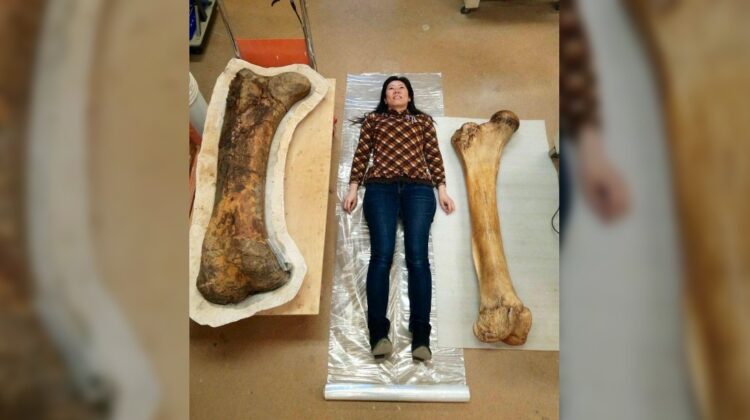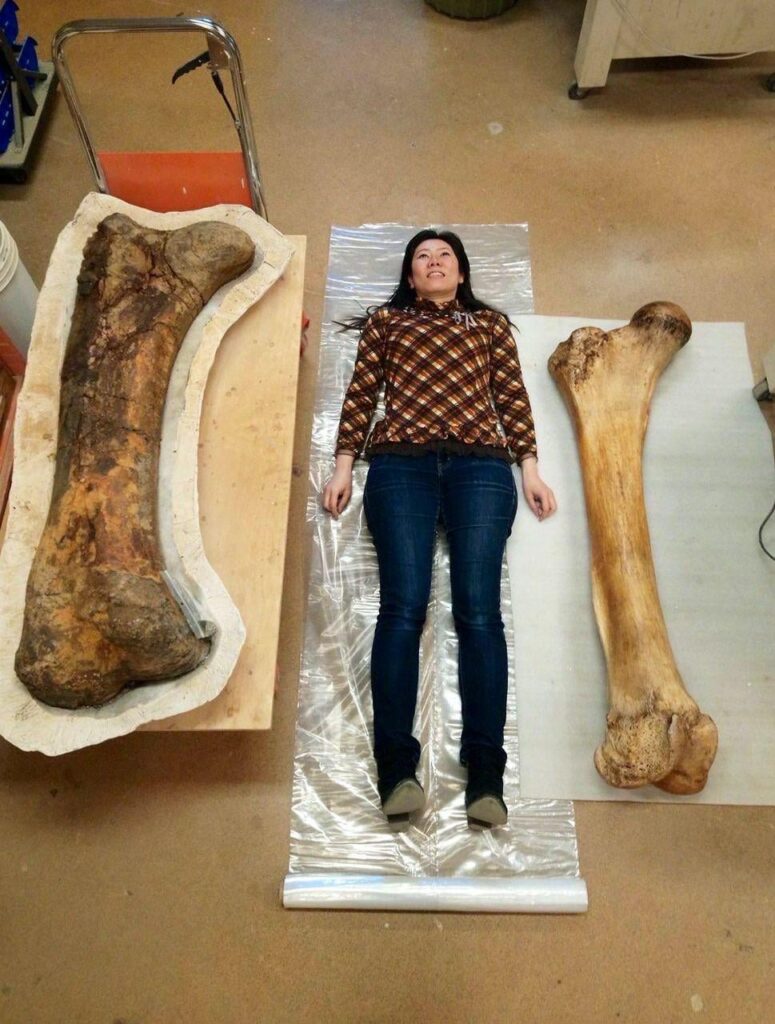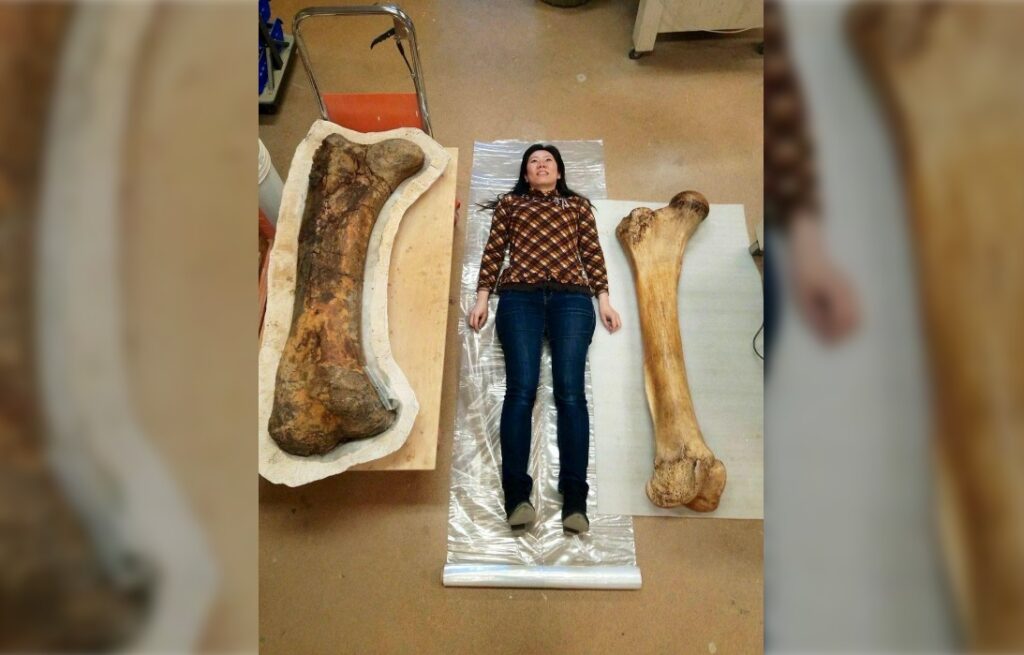
The femur, that’s the longest, strongest, and heaviest bone in our body –– just like the one in the picture on the left, which belonged to a mighty Triceratops. On the right, for comparison, is the femur of an African elephant.
Just like our own femur, this dinosaur bone was crucial for supporting its massive body. Femurs play a vital role across the animal kingdom, and in humans, this bone is no exception. It’s surprisingly hard to break, thanks to its robust build and the protection it receives from surrounding muscles.

But the femur does much more than simply provide strength. It’s a key player in maintaining our posture and balance. Imagine a complex network of muscles, tendons, and ligaments – our femur acts as a central hub, connecting our hips and knees to other parts of the body, even those related to circulation. When we stand or move, our femur bears the brunt of our weight, keeping us stable and preventing embarrassing tumbles.

The average adult human femur clocks in at around 18 inches (45 cm) long. While that might seem substantial, it pales in comparison to the behemoths of the past. The Triceratops femur in the picture serves as a humbling reminder of the incredible size and strength these creatures possessed.

Leave a Reply